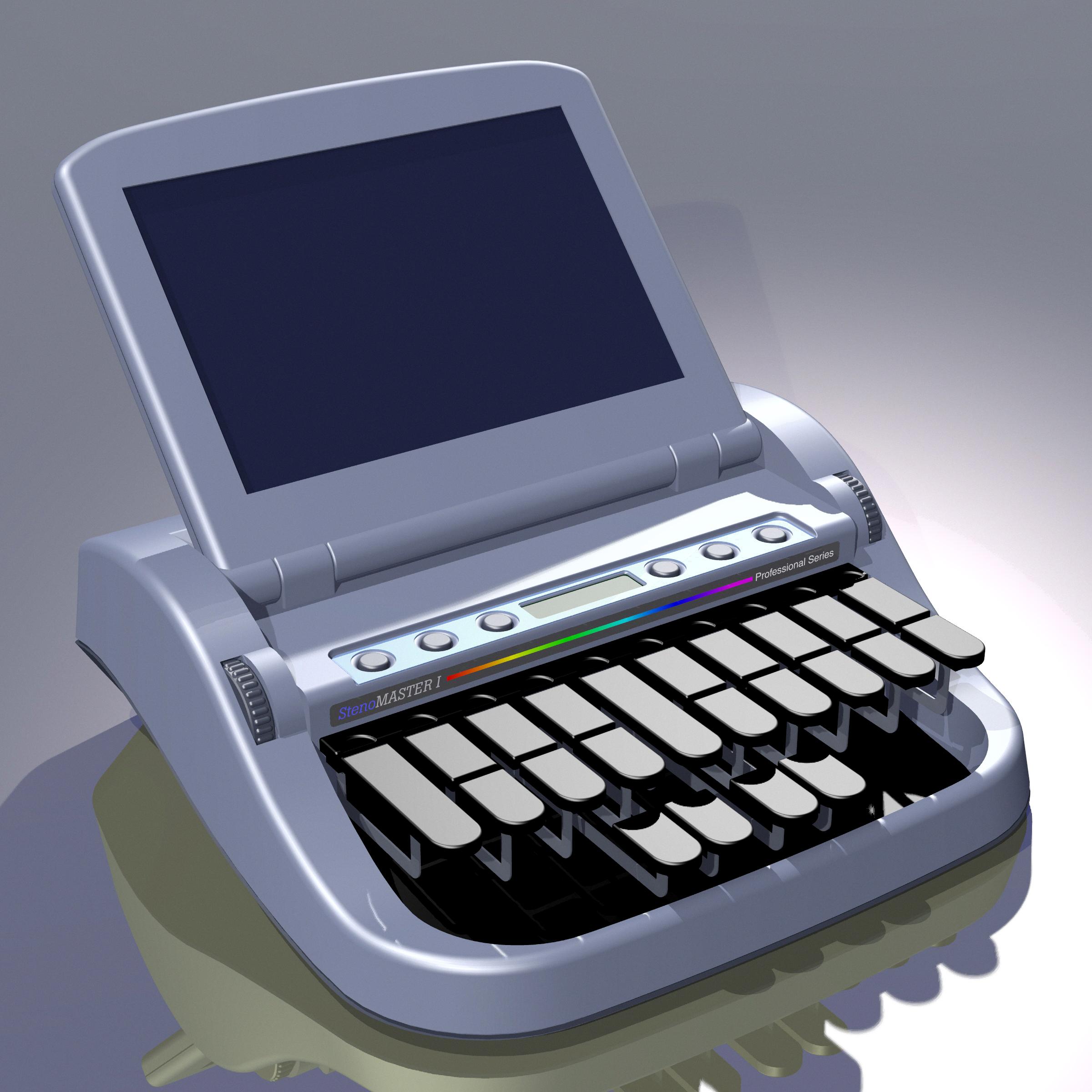Stenography is a technique of writing that allows a person to record spoken words at a very high speed. Stenography has long been used by court reporters, journalists, and other professionals who need to transcribe spoken words with speed and accuracy. Today, stenography is done using specialized machines called stenographs.
A stenograph is a machine that is designed specifically for stenography. The machine has a modified keyboard with 22 buttons that represent the beginning consonants of words, vowels, and ending consonants. The machine also has a delete key that allows the stenographer to quickly correct mistakes. The keys are arranged in two rows of consonants and four vowels uderneath a long number bar. This design allows the stenographer to type at a rate of nearly 300 words per minute.
When a stenographer types on a stenograph, the machine records the keystrokes and translates them into English text. The stenograph is equipped with software that can interpret the keystrokes and convert them into words and phrases. This process is known as real-time translation. The software also allows the stenographer to edit the text in real-time, correcting mistakes and making changes as necessary.
Stenography is a highly specialized skill that requires a significant amount of training and practice. Stenographers must be able to type at a very high speed while maintaining accuracy and precision. They must also have excellent listening skills and be able to quickly interpret spoken words and phrases.
Stenography is an essential tool for professionals who need to transcribe spoken words with speed and accuracy. Stenographs are specialized machines that allow stenographers to type at a rate of nearly 300 words per minute. The machines are equipped with software that can interpret keystrokes and convert them into English text. Stenography is a highly specialized skill that requires a significant amount of training and practice.
Reading a Stenograph
Stenography is a form of shorthand writing that is used to transcribe spoken words or events quickly. Reading stenograph involves understanding the symbols used by the stenographer, which are a combination of letters, numbers, and special characters.
To read a stenograph, one must first understand the basics of steno language. The letters on the left-hand side of the steno keyboard represent the beginning consonants of words, while the letters on the right-hand side represent the ending consonants. The keys operated by the thumbs represent vowels.
It is important to note that some steno symbols may represent more than one letter or sound. For example, the symbol for “TR” can also represent the letter “C”. Additionally, some steno symbols may be used to represent entire phrases or words.
To begin reading a stenograph, one must first become familiar with the steno keyboard and the symbols used by the stenographer. Once the basic symbols are understood, the stenograph can be read by lookng for patterns and context clues.
It is also important to note that stenographers often use a shorthand style of writing, which means that they may leave out certain words or phrases that are implied by the context of the conversation. Therefore, it is important to have a good understanding of the subject matter being discussed in order to accurately interpret the stenograph.
Reading a stenograph involves understanding the symbols used by the stenographer, recognizing patterns and context clues, and having a good understanding of the subject matter being discussed.

Source: free3d.com
Keys on a Stenograph
A stenotype machine is a specialized keyboard that has a unique layout and design. Unlike a standard QWERTY keyboard, a stenotype keyboard features 22 buttons arranged in a specific manner. The keyboard has two rows of consonants in the middle, located just below a long number bar. In front of these rows of consonants are four vowel keys: “A,” “O,” “E,” and “U.” These keys are strategically placed to allow the user to type words quickly and accurately.
The stenotype machine also has several other keys that are used for various functions. These include:
– The asterisk (*) key, whih is used to indicate a brief pause in speech.
– The hyphen (-) key, which is used to indicate a longer pause in speech.
– The number sign (#) key, which is used to indicate a number or symbol.
– The capitalize (CAP) key, which is used to capitalize the first letter of a word.
– The lock (LK) key, which is used to lock the steno machine into a specific mode.
– The return (RTN) key, which is used to enter a new line of text.
Using a stenotype machine requires a specific set of skills and training, as it can take some time to learn the layout and functionality of the keyboard. However, once mastered, the stenotype machine can greatly increase the speed and accuracy of transcription and captioning tasks.
The Speed of Stenography: How Does a Stenographer Type So Quickly?
A stenographer is a professional who transcribes spoken or recorded words into written form. To accomplish this task quickly, stenographers use a shorthand typing machine called a stenotype machine. This machine is specially designed with a keyboard that has fewer keys than a standard computer keyboard.
The stenotype machine’s keyboard is designed to allow stenographers to type entire words or phrases with just a few keystrokes. The machine uses a system of phonetic shorthand that allws the stenographer to type at a rate of nearly 300 words per minute.
To use a stenotype machine, the stenographer must be highly trained and skilled. They must be familiar with the machine’s keyboard layout and shorthand system to transcribe speech accurately and quickly.
Stenographers type quickly by using a specialized machine called a stenotype, which has a unique keyboard layout and phonetic shorthand system. With practice and training, stenographers can type at a remarkable speed, making them invaluable in many industries such as legal, medical, and broadcast journalism.
Keeping Up with Court Stenographers
Court stenographers are highly skilled professionals who are responsible for recording every word spoken during legal proceedings. As you can imagine, these proceedings can often involve a lot of fast-paced dialogue, making it nearly impossible for a typist to keep up by simply typing each word as it is spoken.
To address this challenge, court stenographers use a technique called stenography, whch involves typing shorthand symbols on a special machine called a stenotype. The stenotype has fewer keys than a traditional keyboard, but each key represents a combination of sounds or words rather than individual letters.
By using stenography, court stenographers can record speech at speeds of up to 360 words per minute, which is much faster than the average person can speak. The stenographer translates the shorthand symbols into readable text using special software that matches the symbols to words and phrases.
In addition to their stenotype machine, court stenographers may also use specialized software and audio recording devices to help them capture and transcribe legal proceedings accurately. the combination of these tools and techniques allows court stenographers to keep up with even the most fast-paced legal proceedings and produce highly accurate transcripts of the proceedings.

Conclusion
The Stenograph machine is a highly efficient tool for stenographers and transcriptionists who need to record speech at incredibly fast rates. With its unique keyboard layout and specially designed keys, stenographers can type at speeds of up to 300 words per minute, making it an essential piece of equipment in the field. Modern stenotype machines have evolved to include additional features, such as real-time translation and voice recognition technology, which further enhances their capabilities. the stenograph is an indispensable tool for anyone working in the field of transcription or stenography, and its importance cannot be overstated.
